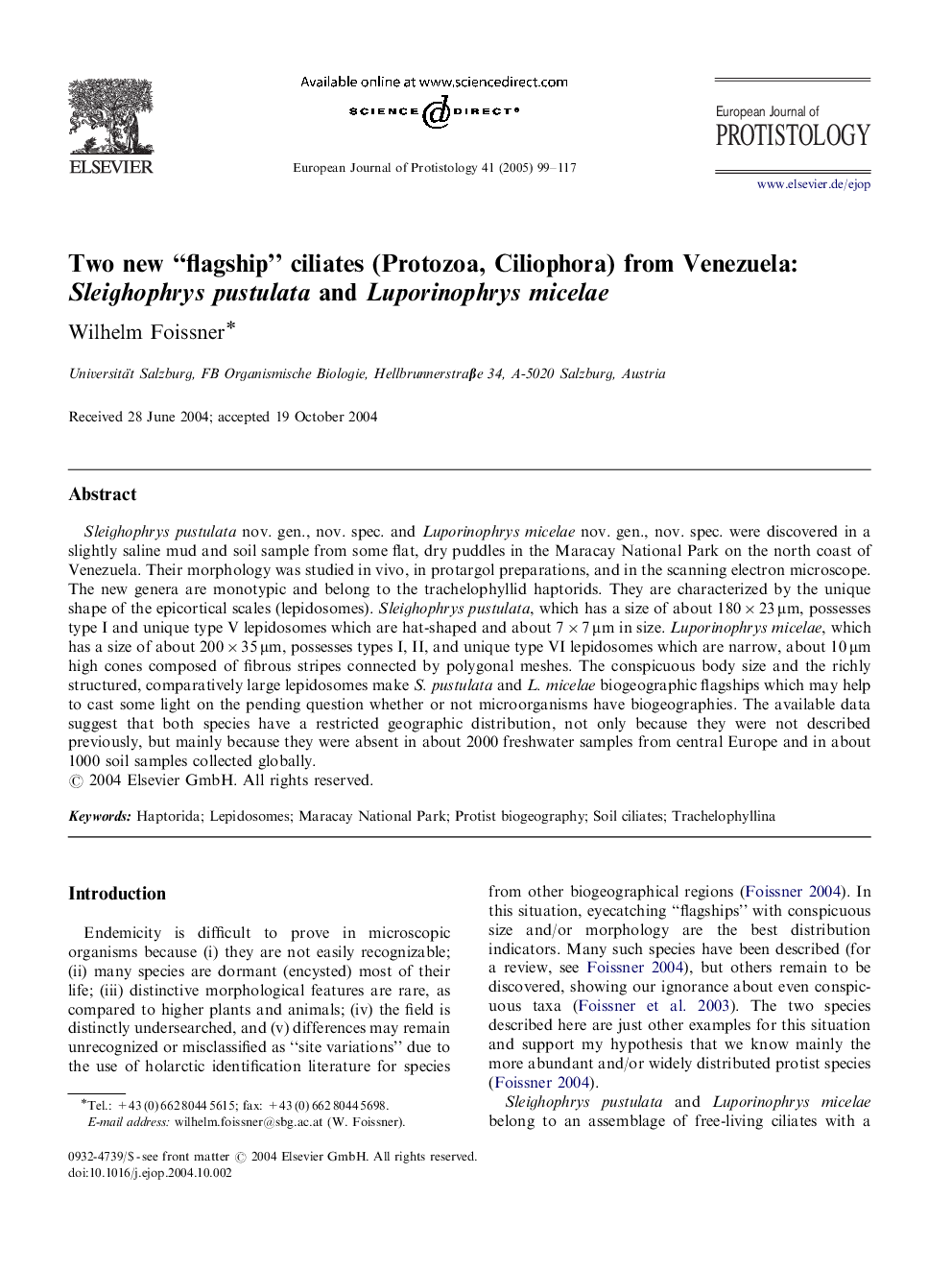| Article ID | Journal | Published Year | Pages | File Type |
|---|---|---|---|---|
| 9895504 | European Journal of Protistology | 2005 | 19 Pages |
Abstract
Sleighophrys pustulata nov. gen., nov. spec. and Luporinophrys micelae nov. gen., nov. spec. were discovered in a slightly saline mud and soil sample from some flat, dry puddles in the Maracay National Park on the north coast of Venezuela. Their morphology was studied in vivo, in protargol preparations, and in the scanning electron microscope. The new genera are monotypic and belong to the trachelophyllid haptorids. They are characterized by the unique shape of the epicortical scales (lepidosomes). Sleighophrys pustulata, which has a size of about 180Ã23 μm, possesses type I and unique type V lepidosomes which are hat-shaped and about 7Ã7 μm in size. Luporinophrys micelae, which has a size of about 200Ã35 μm, possesses types I, II, and unique type VI lepidosomes which are narrow, about 10 μm high cones composed of fibrous stripes connected by polygonal meshes. The conspicuous body size and the richly structured, comparatively large lepidosomes make S. pustulata and L. micelae biogeographic flagships which may help to cast some light on the pending question whether or not microorganisms have biogeographies. The available data suggest that both species have a restricted geographic distribution, not only because they were not described previously, but mainly because they were absent in about 2000 freshwater samples from central Europe and in about 1000 soil samples collected globally.
Keywords
Related Topics
Life Sciences
Agricultural and Biological Sciences
Agricultural and Biological Sciences (General)
Authors
Wilhelm Foissner,
